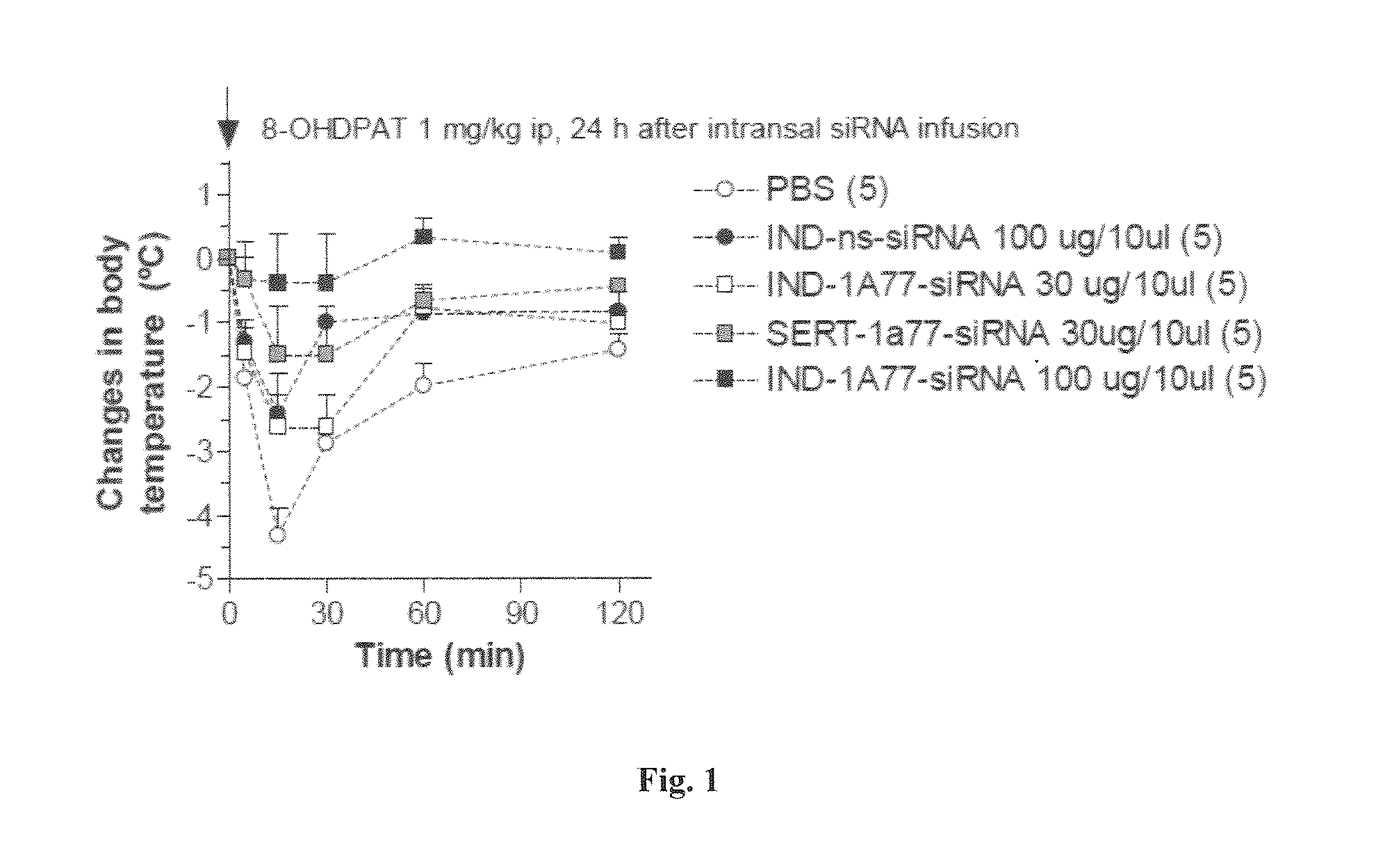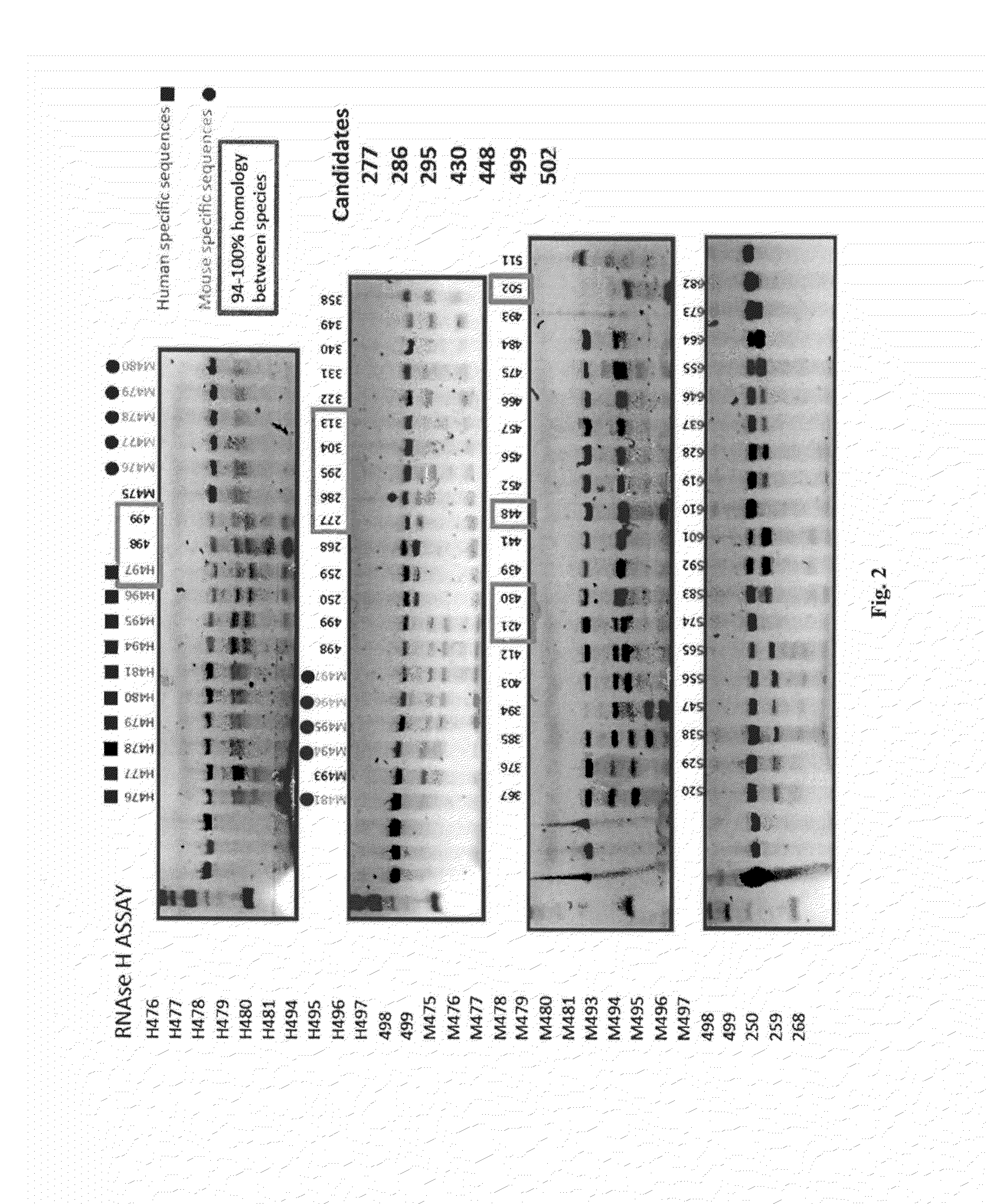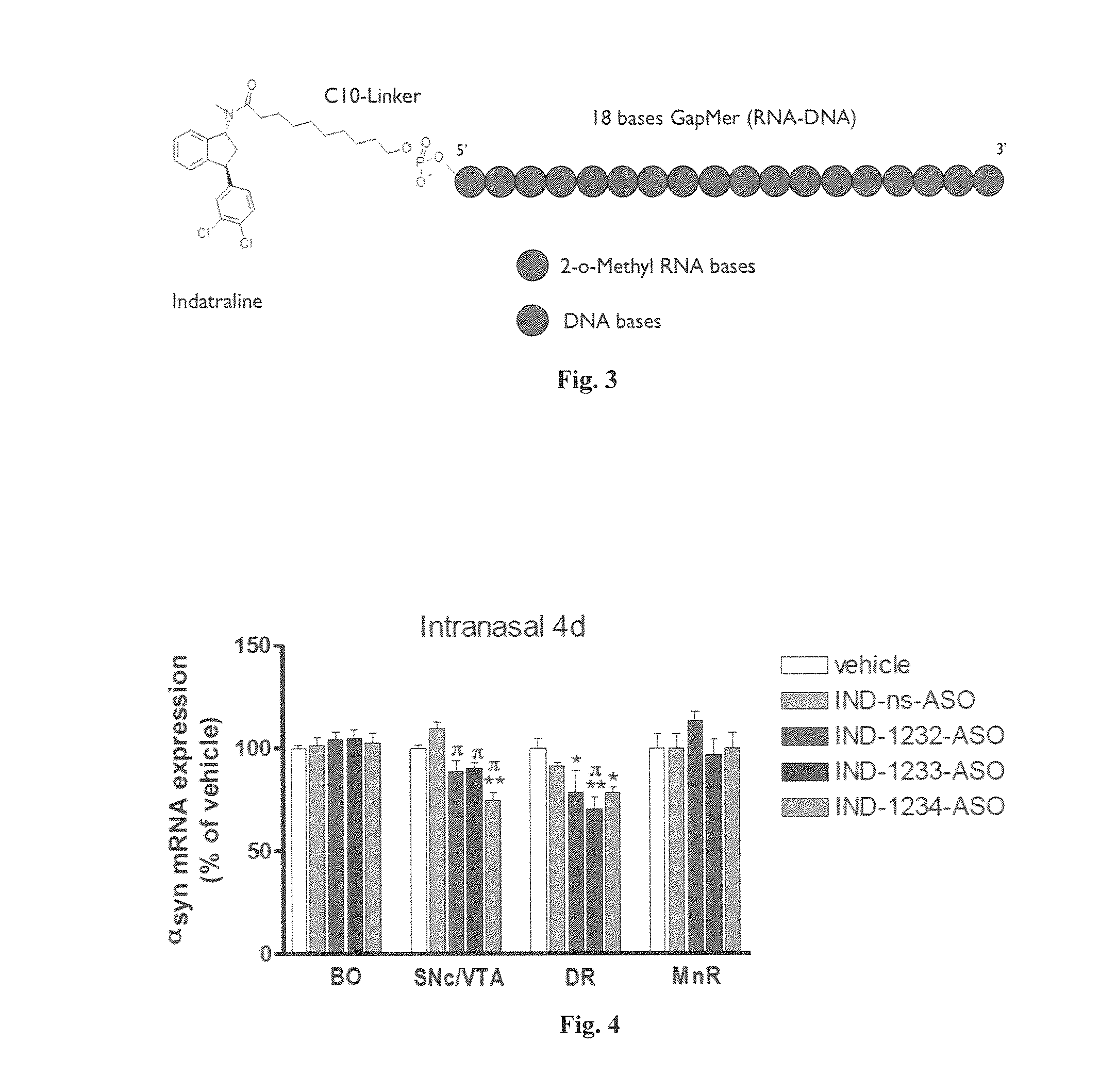Compositions and methods for the treatment of parkinson disease by the selective delivery of oligonucleotide molecules to specific neuron types
a technology of oligonucleotide molecules and parkinson disease, which is applied in the direction of drug compositions, nervous disorders, biochemistry apparatus and processes, etc., can solve the problems of specificity conferred by rnai-based brain pathology therapy approaches, the silencing of genes, and the blood-brain barrier (bbb) as the target of brain pathology therapy, so as to avoid side effects
- Summary
- Abstract
- Description
- Claims
- Application Information
AI Technical Summary
Benefits of technology
Problems solved by technology
Method used
Image
Examples
example 1
Targeting Validation: Function
[0474]Experimental Design
[0475]To determine functionally the targeting of the molecules according to the invention, an oligo anti-5HT1A with indatraline was used. The molecule was intranasally administrated to validate that indatraline targets raphe nuclei. Two different concentrations were tested (30 and 100 μg / mouse) and hypothermia after 8-OH-DPAT administration was assessed to determine functionally that 5-HT1A receptors in raphe were targeted. Basal temperature was determined 24 hours after intranasal administration of the molecule.
[0476]8-Hydroxy-2-(di-n-propylamino)tetralin (8-OH-DPAT) is a selective 5-HT1A agonist that induces hypothermia in mice by activating somatodendritic 5-HT1A autoreceptors in median raphe. By this assay, it was determined if the hypothermia induced by 8-OH-DPAT can be blocked by indatraline, if able to target raphe, and the oligo that blocks down 5-HT1A.
[0477]30 and 100 μg / mouse of molecule according to the invention was ...
example 2
Targeting Validation: Localization
[0480]Experimental Design
[0481]To visualize whether substantia nigra, locus coeruleus and raphe were targeted, an intra-ventricular administration of indatraline-antisense labelled with the fluorophore Alexa488 was used. Indatraline is a non-selective monoamine transporter inhibitor that blocks the reuptake of dopamine, norepinephrine, and serotonin.
[0482]Dopamine transporter (DAT) expression is localized in dopaminergic neurons of the substantia nigra pars compacta (SNC).
[0483]Norepinephrine transporter (NET also known as solute carrier family 6 member 2, SLC6A2) expression is restricted to noradrenergic neurons in locus coeruleous (LC) and are not present on neurons that release dopamine or epinephrine.
[0484]Serotonin transporter (SERT) expression is primarily located in serotonergic neurons localized in raphe nuclei with high levels in dorsal raphe (DR).
[0485]For co-localization purposes tyrosine hydroxylase (TH) and tryptophan hydroxylase (TPH) ...
example 3
Candidate Selection
[0490]Experimental Design
[0491]A total of 7 pre-candidates molecules were selected by RNase H assay. The objective of this assay was to determine which of the seven oligonucleotides promotes the activity of this non-specific endonuclease that catalyzes the cleavage of mRNA.
[0492]To determine the knockdown of mRNA in vivo, in situ hybridization was performed in a total of five animals per analyzed molecule. The seven pre-candidates molecules were divided in two groups administrated in consecutive weeks. A total of 30 μg / mouse / day was administered during 4 consecutive days. Animals were sacrificed 24 hours after the last administration.
[0493]Results
[0494]FIG. 2 shows the results of the RNase H assay.
[0495]The following criteria were used during selection: selected candidates as shown in FIG. 2, a 94-100% homology between 5 species (mouse, rat, dog, monkey and human), no homology with other synucleins (gamma and beta) and induce of RNase H activity.
[0496]To perform t...
PUM
| Property | Measurement | Unit |
|---|---|---|
| temperature | aaaaa | aaaaa |
| time | aaaaa | aaaaa |
| time | aaaaa | aaaaa |
Abstract
Description
Claims
Application Information
 Login to View More
Login to View More - R&D
- Intellectual Property
- Life Sciences
- Materials
- Tech Scout
- Unparalleled Data Quality
- Higher Quality Content
- 60% Fewer Hallucinations
Browse by: Latest US Patents, China's latest patents, Technical Efficacy Thesaurus, Application Domain, Technology Topic, Popular Technical Reports.
© 2025 PatSnap. All rights reserved.Legal|Privacy policy|Modern Slavery Act Transparency Statement|Sitemap|About US| Contact US: help@patsnap.com



